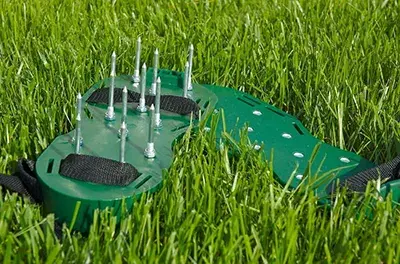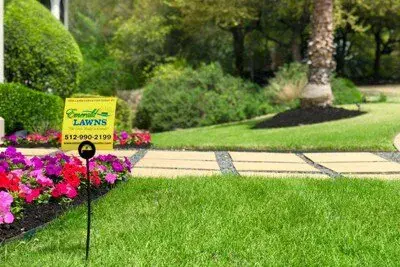Tree and Shrub Care Tips
Trees and shrubs are great additions to any outdoor space. Aside from their aesthetic appeal, they provide additional shade and privacy to your property. For lawn care, they can help with erosion control and water conservation. However, they are also vulnerable to a host of diseases and conditions.
The best tree and shrub care comes from professional lawn care technicians who understand their needs, especially in your area’s environment. Here are our top tree and shrub care tips to ensure healthy and beautiful growth year-round.
What Are the Common Tree and Shrub Diseases across Texas?
Leaf Spot Disease
Leaf spot disease encompasses fungal or bacterial infections that cause circular, discolored spots on leaves. These spots can be yellow, brown, or black and merge to create larger areas of damage. They can prevent photosynthesis, weaken leaves, and cause stunted growth. It occurs during warm and humid conditions when leaves remain wet for extended periods, creating an environment for fungi and bacteria to grow. Treatment requires pruning infected foliage, improving air circulation, and applying fungicides if necessary. Avoiding overwatering and keeping foliage dry is essential for maintenance.

Powdery Mildew Disease
Powdery mildew is a fungal disease that causes trees and shrubs to develop a powdery white or gray coat. It typically occurs in fall and spring, when warm days and cool nights can affect humidity levels. Affected plants may show curled leaves, distorted growth, or reduced flowering. Left untreated, the disease can spread, especially in younger growth.
Treating powdery mildew requires pruning infected areas, improving airflow, and applying fungicides. Practices such as drip irrigation and preventing conditions that help fungi thrive can ensure the health of your trees and shrubs.

Sooty Mold Disease
Sooty mold is a fungal growth that develops on the leaves, stems, or branches of deciduous trees and shrubs. Also known as black mildew, it is caused by insects that feed on sap and excrete a sticky, sugary substance called honeydew. This can coat the affected areas and ultimately create a place for fungi to grow. It forms a black coating that blocks sunlight, preventing photosynthesis and weakening the plant.
While the mold can be removed, it’s important to address the underlying pest infestation to effectively treat your tree or shrub. Regular maintenance and balanced fertilization also address any existing sooty mold.

Pest Infestations
According to Texas Parks & Wildlife, out of the 100,000 insects native to the United States, a third can be found in Texas. Because of the climate, soil conditions, and native flora, many properties see common pest infestations. Aphids, borers, grubs, fire ants, fleas, and many other pests can severely damage trees and shrubs by feeding on them. This can result in discolored leaves, stunted growth, or a weakened structure. Managing infestations involves identifying the specific pest, applying targeted insecticides or biological controls, and addressing heavily infested areas. However, given plenty of environmental factors beyond anyone’s control, effective pest control to address all insects and common pests requires different treatments year-round.

What Are Some Effective Tree and Shrub Care Tips for Texas Homes?
Once established, trees and shrubs are relatively lower maintenance than other plants. However, depending on the species, your area’s climate, and the time of year, there are some steps you must take to keep them healthy. Follow these tree and shrub care tips to see lush and beautiful growth that improves your outdoor spaces’ overall appearance.
- Live oaks
- Texas mountain laurels
- Yaupon Hollies
- Crape myrtles or vitex trees can adapt to Texas’ environmental conditions
Water Deeply and Infrequently: Young trees and some trees during the summer may require more frequent watering. However, most trees can thrive best when watered deeply and infrequently. This encourages them to grow deeper roots, making them more resilient to drought.
Prune Regularly: Remove dead, diseased, or damaged branches to prevent pests and diseases from spreading. Use proper pruning techniques to avoid damaging the tree, and hire a professional for large or complex jobs.
Address Soil Health:
Healthy soil is the foundation of thriving trees and shrubs. Test your soil at least once yearly to check for pH levels, nutrient deficiencies, and drainage issues. This can help you address any issues before investing in unnecessary tree and shrub care services.
- Live oaks
- Texas mountain laurels
- Yaupon hollies
- Crape myrtles or vitex trees can adapt to Texas’ environmental conditions
FAQs About Emerald Lawn’s Tree and Shrub Care Services
FAQS
Answer: Emerald Lawns services all perennial plants (in-ground), trees, and shrubs less than 25 inches in height and less than 12 inches wide at the trunk*. This includes:
Trees
- Bradford Pear
- Cypress
- Elm
- Magnolia
- Oak
- Red Bud
- Salvia
- Silver Leaf Maple
- Texas Ash
- Texas Mountain Laurel
Shrubs and Ground Coverings
- Agave
- Bicolor Iris
- Crepe Myrtle
- Cotoneaster
- Euonymus
- Gardenia
- Holly
- Iliagnus
- Indian Hawthorne
- Japanese Boxwood
- Japanese Yew
- Lantana
- Ligustrum
- Loropetalum
- Nandina
- Oleander
- Pittosporum
- Pyracantha
- Red Tip Photinia
- Roses, Rose of Sharon
- Red Yucca, Soft Leaf Yucca
- Sago Palm, Mexican Fan Palm
- Salvia
- Sky Pencil
- Texas Sage
- Viburnum
- Vinca
- Wax Myrtles
- Dwarf Yaupon, Yaupon Hollies
*We don’t treat adult trees that were on your property before your home was constructed.
See Healthy and Thriving Growth with Emerald Lawns
Caring for your trees and shrubs is an investment in your outdoor spaces' health, beauty, and longevity. By following our tree and shrub care tips, you can ensure that your greenery thrives even in Texas’ challenging climate.
Let Emerald Lawns help you achieve sustainable and enjoyable outdoor spaces. Get in touch with us today to discuss what your trees and shrubs need.


.png?width=1142&height=1350&name=Holiday%20Decor%202025%20LP%20-%20548x648%20%20(1).png)

